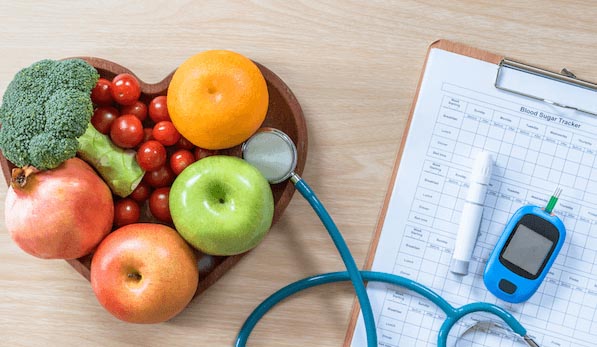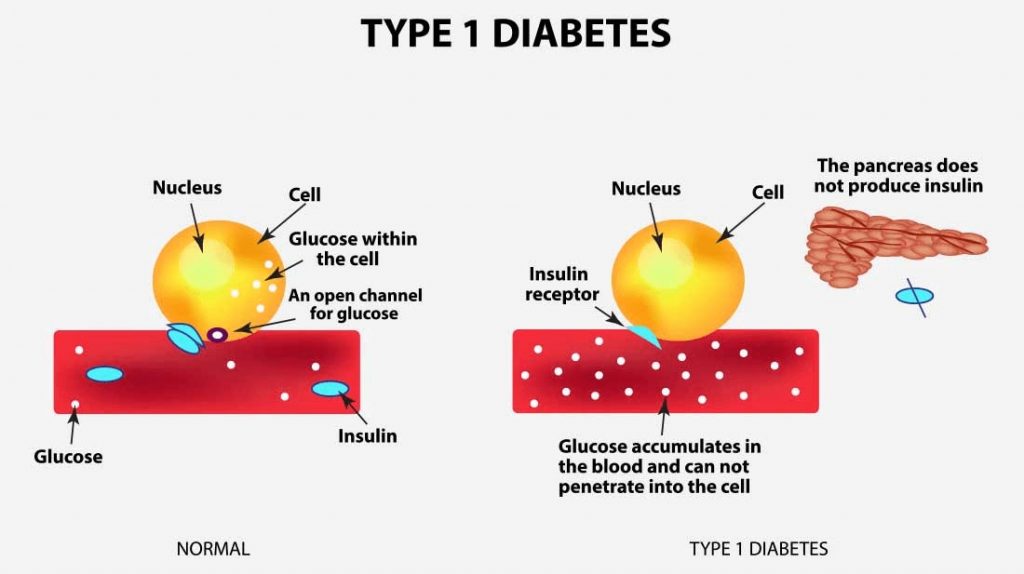As of 2020, “34.2 million Americans have been diagnosed with diabetes.” The Center for Disease Control and Prevention (CDC) suggests that’s 10.5% of the US population. Diabetes is rare among children, but common among adults age 19 to 40 and very common among seniors. With the right treatment options, many people with diabetes can live a full life. There are a few things individuals can do to lower the risk of becoming a diabetic. The following post discusses diabetes and the risk factors in more detail below.
Contents
What Causes People To Become Diabetic
Diabetes is a series of diseases that impacts how your body uses blood sugar which is commonly referred to as “sugar.” The medical term for blood sugar is glucose. Glucose is essential to the body’s cells and also has a role in the function of the brain. More importantly, glucose provides energy to the cells that make up the tissue and muscles of the body.
As far as the brain, glucose is an essential part of fuel. Thus, blood sugar is vital to your health and is greatly impacted by diabetes.
There are different types of diabetes therefore there are a few direct underlying risk factors.
However, the most common risk factor of diabetes of any type is an excess of sugar in the cells.
Take a look at the short video clip below to see how diabetes impacts the body:
Common Type Of Diabetes
The chronic form of diabetes is known as type 1 and type 2 diabetes.
Type 1 Diabetes
Type 1 diabetes is very rare and there are around 200,000 cases found in the United States each year. In the case of type 1 diabetes, the pancreas produces no insulin at all or very little.
This type of diabetes is typically found in adolescence and last for years or can be a lifelong condition. There is no cure for type 1 diabetes, but it can be treated. The signs of type 1 diabetes can be very subtle and later become extreme.
Treatment options for type 1 diabetes include maintaining a normal blood sugar level under the supervision of your physician. In fact, a doctor may recommend a specific diet or exercise to manage your type 1 diabetes.
Symptoms of type 1 diabetes may include:
- excess thirst
- frequent urination
- hunger
- fatigue
- sweating
- gastrointestinal issues
- fast heart rate
- sleepiness
Talk to your doctor if you or someone you love are experiencing any of the above symptoms.
Type 2 Diabetes
Unfortunately, millions of people are at risk of being diagnosed with type 2 diabetes each year. With type 2 diabetes the body has difficulty processing blood sugar also known as glucose. If the body is having a hard time processing glucose, areas of the body can shut down and lead to fatality. Type 2 diabetes can also have extremely high glucose levels. Adults mainly suffer from type 2 diabetes, but in rare cases, it can impact children. In some cases, your body can also produce very little insulin or even resist it altogether.
Your doctor will diagnosis you with type 2 diabetes and much like type 1, it can last for years or be a lifelong condition. Lab test performed by your doctor and images is used to confirm type 2 diabetes.
Type 2 diabetes is treated by insulin therapy that includes anti-diabetic medication. This is when you see someone that consistently checks their blood sugar and administers themselves with insulin. A controlled diet and exercise may also be used to treat diabetes.
Symptoms of type 2 diabetes include:
- frequent urination
- weight gain/loss
- wounds that are slow to heal
- blurred vision
- excessive hunger/thirst
If you or someone you love is suffering from any of the above symptoms, talk to your doctor right away.
There are two forms of diabetes that are reversible including prediabetes and gestational diabetes. Prediabetes has high blood sugar levels, but not high enough to be considered diabetes. Gestational diabetes usually occurs in pregnant women and goes away after the baby is born.
What Are The Risk Factors Of Diabetes
Take a look at the short video clip below to learn more about the risk factors of diabetes:
As you’ve learned from the video above, there are several risk factors for diabetes. If diabetes is in a family, it is likely other members will be diagnosed with it. In fact, African Americans and Latinos are more likely to be diagnosed with type 2 diabetes. However, according to the CDC, “white Americans are more likely to be diagnosed with type 1 diabetes than African Americans and Latinos.”[
How Does Obesity Contribute To Diabetes?
When you’re obese, the number of substances for insulin resistance are increased. According to medical experts, body mass and diabetes are significantly linked together.
To avoid getting diabetes it’s important to watch your diet and include exercise into your routine schedule. It doesn’t have to be a hardcore workout, but it should include walking and aerobics.
Foods, Fruits, and Vegetables For Diabetics
- fatty fish
- leafy greens
- avocado
- eggs
- chia seeds
- nuts
- flaxseed
- extra virgin olive oil
- broccoli
Your doctor can recommend the best diet and exercise regimen for any type of diabetes. If you’ve been diagnosed with diabetes, you should get regular checkups to ensure you’re maintaining your blood sugar level to avoid severe medical health consequences. It’s important to follow your doctor’s instructions on how to manage your glucose.
With proper management, you can control the risk factors that lead to diabetes. In fact, you can successfully manage your diabetes if you’ve been diagnosed by a doctor with the proper care and medicine. There are millions of diabetics around the world that are living active full lives.
Safely avoid the risk factors or manage your diabetes under the supervision of your doctor. Maintaining a healthy weight is also important for all diabetics as well.
Live a healthy lifestyle! Talk to your doctor about your risk of being diagnosed with diabetes today!







